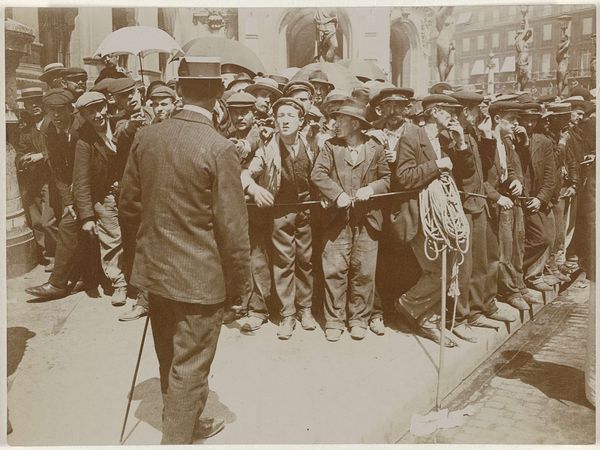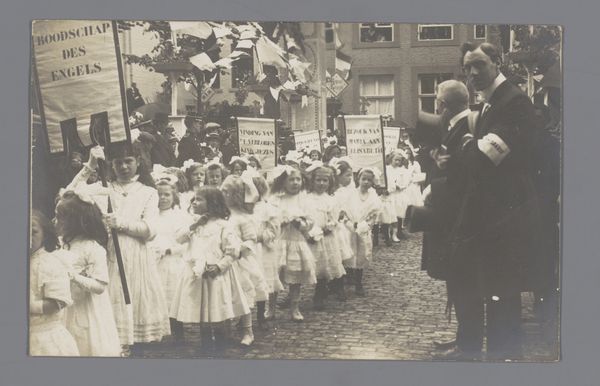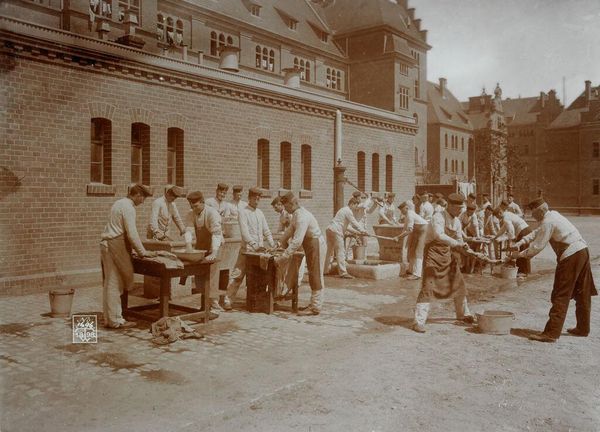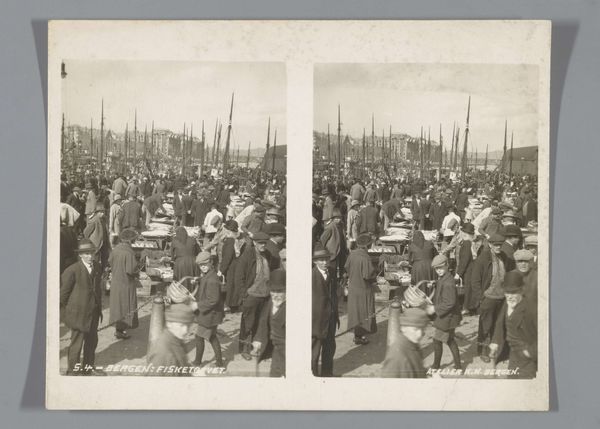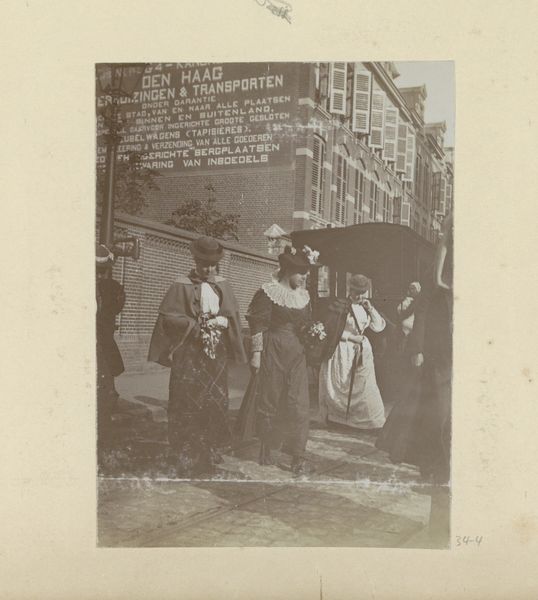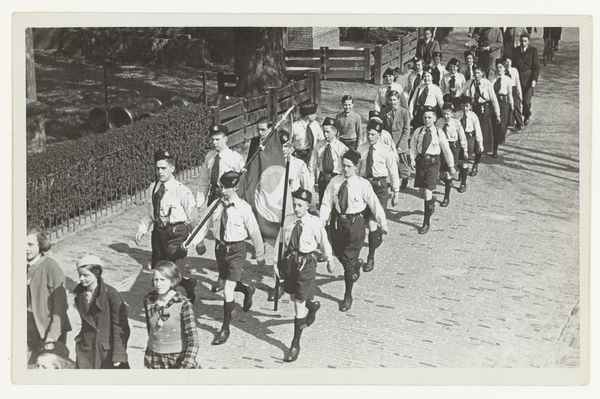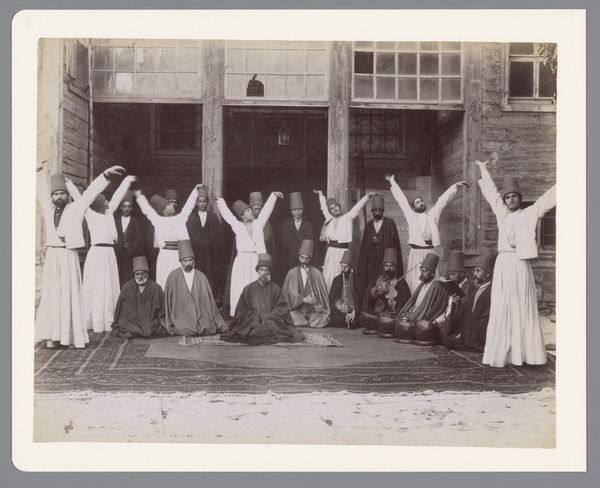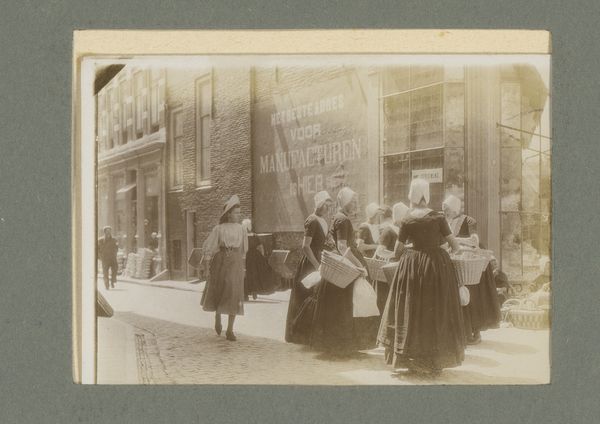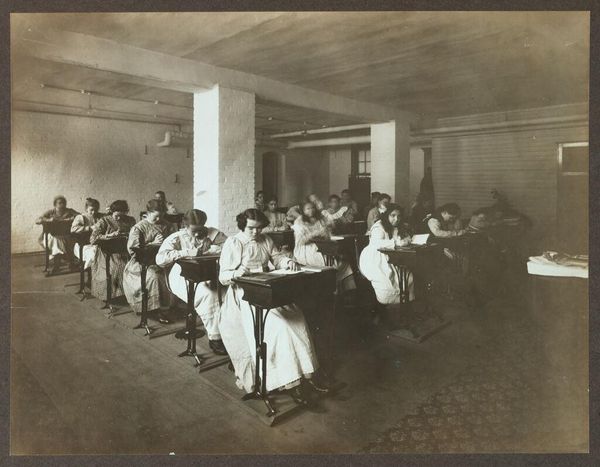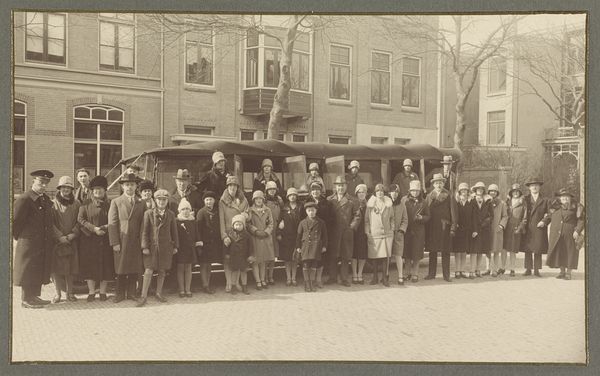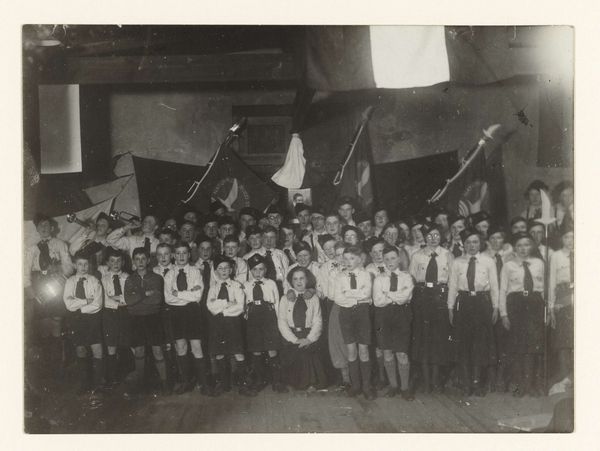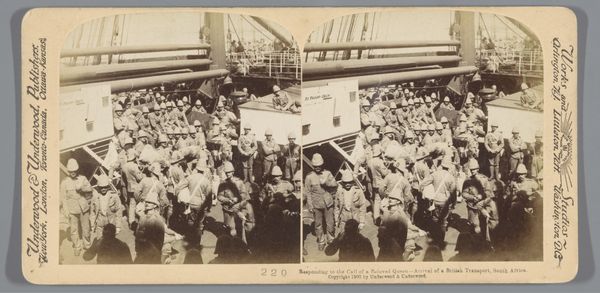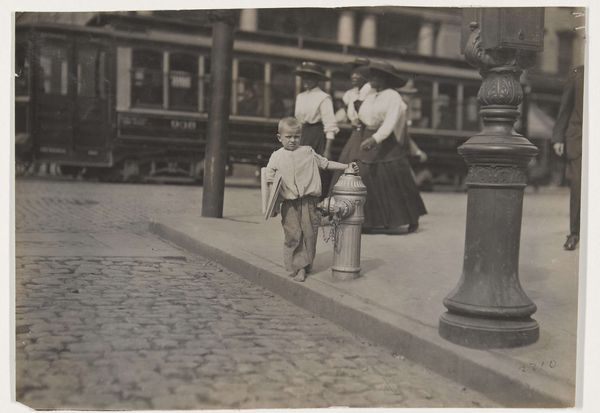
photography, gelatin-silver-print
#
portrait
#
landscape
#
social-realism
#
street-photography
#
photography
#
gelatin-silver-print
#
ashcan-school
#
cityscape
#
person photography
#
realism
Copyright: Public domain
Editor: So here we have Lewis Hine's photograph, "Newsboys with Base Ball Extra, Cincinnati, Ohio, 1908," a gelatin-silver print. The sheer number of young faces is striking and also a little unsettling. They are all holding newspapers, poised for sale. What do you make of this scene? Curator: This photograph speaks volumes about labor and social context. Look at the materiality of their clothing – the wear and tear on their garments tells a story of economic hardship. Hine uses the very process of photography – the gelatin-silver print, a relatively accessible medium at the time – to document and disseminate a message about child labor. Editor: It's interesting to think about the medium itself as a tool for social commentary. The photo being easily reproducible allowed the message to spread far and wide. Curator: Precisely. The newspapers they hawk, consider them as material objects connecting these boys to a larger economic and social structure. These newspapers represent not only their livelihood, but also the dissemination of information – and potentially, the manipulation of public opinion. What do you observe about their engagement with the viewer? Editor: Most of them are looking directly at the camera, and therefore at us. They’re acknowledging our gaze. There’s almost a challenge in their eyes, a demand for recognition. Curator: Indeed. And where do you think those newspapers ended up? Were they recycled, discarded, or did they shape opinions that further impacted the lives of people working in these factories, mills, and other industries reliant on cheap labor? The cycle of production and consumption is key. Editor: So Hine isn’t just showing us the image, he's inviting us to consider our own role in this system, even a hundred years later. Curator: Exactly. The photograph isn't just an aesthetic object, it's a document implicating us all in a continuing dialogue about labor, materials, and consumption. Editor: I hadn’t thought of it in terms of materiality and how the newspapers functioned beyond the image itself. This lens has been very insightful, thank you.
Comments
No comments
Be the first to comment and join the conversation on the ultimate creative platform.
